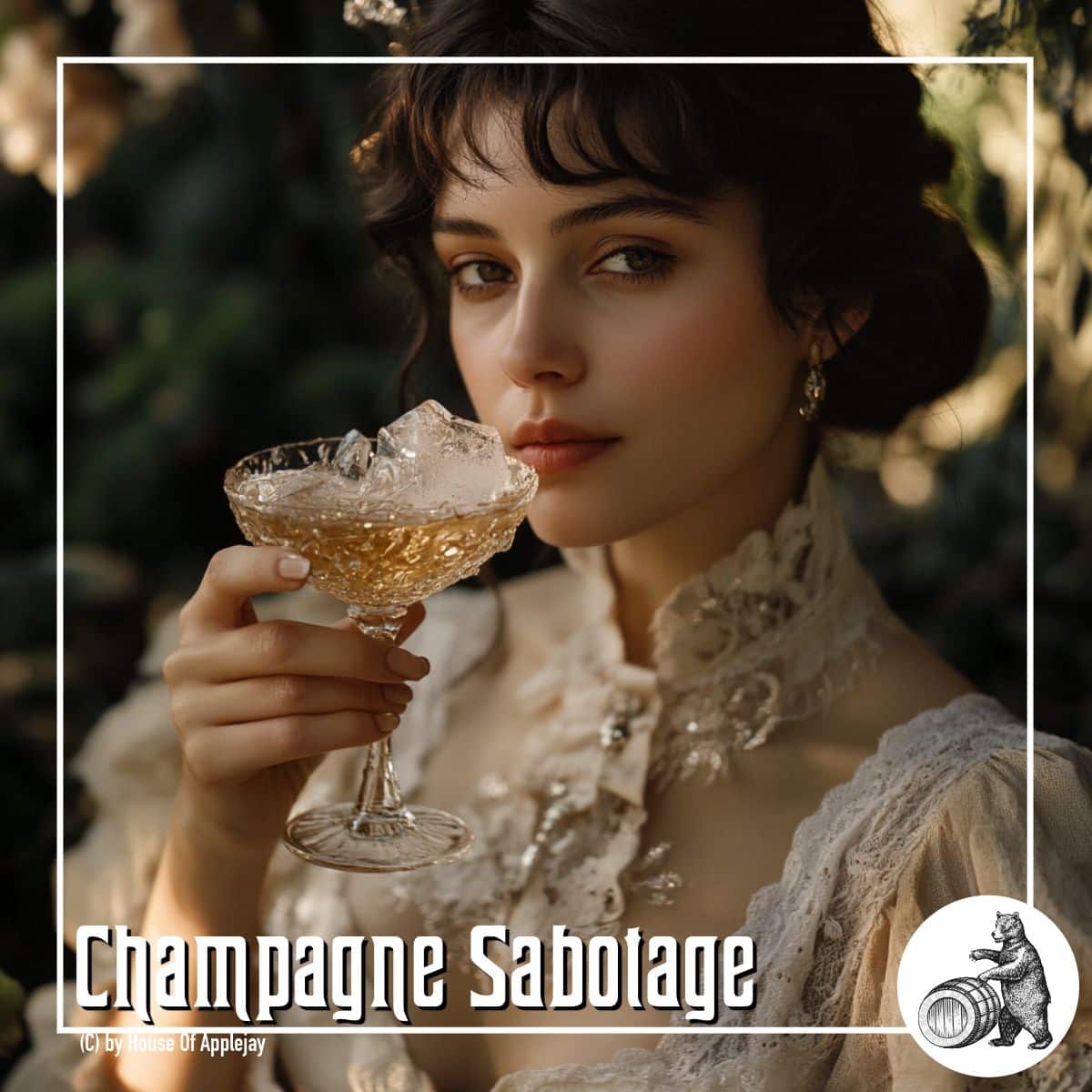The Champagne Sabotage
Madame Clicquot’s Love for Iced Champagne
Barbe-Nicole Ponsardin Clicquot, the trailblazing widow who propelled Veuve Clicquot to global fame, didn’t just revolutionize Champagne production—she savored her creation with a distinctive flair: served over ice. In the early 19th century, when Champagne was a sweet, opulent beverage, her habit of chilling it with river ice, documented in 1820s correspondence, was a blend of practicality, luxury, and quiet rebellion. Madame Clicquot’s iced Champagne reveals a woman whose personal pleasures were as bold and innovative as her business ventures, leaving a legacy that still sparkles.
A Luxurious Twist on Sweet Champagne
In the 1800s, Champagne’s high sugar content, often exceeding 100 grams per liter, made it a rich treat for Europe’s elite. From her Reims estate, Barbe-Nicole used ice to tame this sweetness, crafting a lighter, more refreshing drink. Letters and social notes from the 1820s, referenced in Tilar J. Mazzeo’s The Widow Clicquot (2008), describe her serving Champagne with ice harvested from rivers like the Marne, stored in straw-insulated cellars to endure warm summers. Ice was a rare luxury, requiring dedicated icehouses, and her ability to offer it signaled wealth and resourcefulness. At a summer gathering in the early 1820s, she delighted guests with chilled Champagne, the glasses sweating in the heat as bubbles danced, showcasing her knack for turning simple pleasures into elegant spectacles. Her practice aligned with the era’s elite, who prized chilled wines as a status symbol. A mid-1820s account recalls a cellar tour, followed by iced 1811 vintage—the famed “comet vintage”—in her garden, described as “a sip of starlight,” captivating guests in the warm air.
Breaking Norms and Shaping Trends
Madame Clicquot’s iced Champagne challenged the era’s rigid dining etiquette, often served at casual gatherings like garden parties or intimate suppers, introducing relaxed sophistication. At a 1820s meeting with Reims merchants, she offered her latest vintage, chilled with ice, in unpretentious glassware, winning skeptics with its refreshing clarity and sparking toasts to her ingenuity. Her influence reached Russia, where her 1814 shipment of 10,550 bottles to St. Petersburg made Veuve Clicquot a sensation. A late-1820s Russian noble, struck by her iced Champagne, reportedly popularized chilled sparkling wines at imperial banquets. A British traveler in the 1830s, sampling iced Veuve Clicquot in Paris, praised its “delightful chill” that made the wine “dance across the palate,” showing her global impact. Her iced Champagne foreshadowed modern “on the rocks” serves, like Moët & Chandon’s Ice Impérial, reflecting her vision of Champagne as approachable luxury. Whether sipped at a summer party or poured chilled at a wedding, her innovation endures.
Madame Clicquot’s life was a masterclass in blending tradition with bold progress. She transformed Champagne from a cloudy, rustic drink into the clear, celebratory wine we know today, while redefining luxury as something both sophisticated and approachable. Her cellars, rich with meticulously crafted bottles, embodied a marriage of craft and pleasure.
The Distilling Culture
BLOG
Embark on a global journey, and you’ll find that cultures possess tales that harken back to their ancient beginnings of distillation, brewing, and winemaking.
info@houseofapplejay.com
67 Fowler St, Bldg B, East Ellijay, GA 30540

